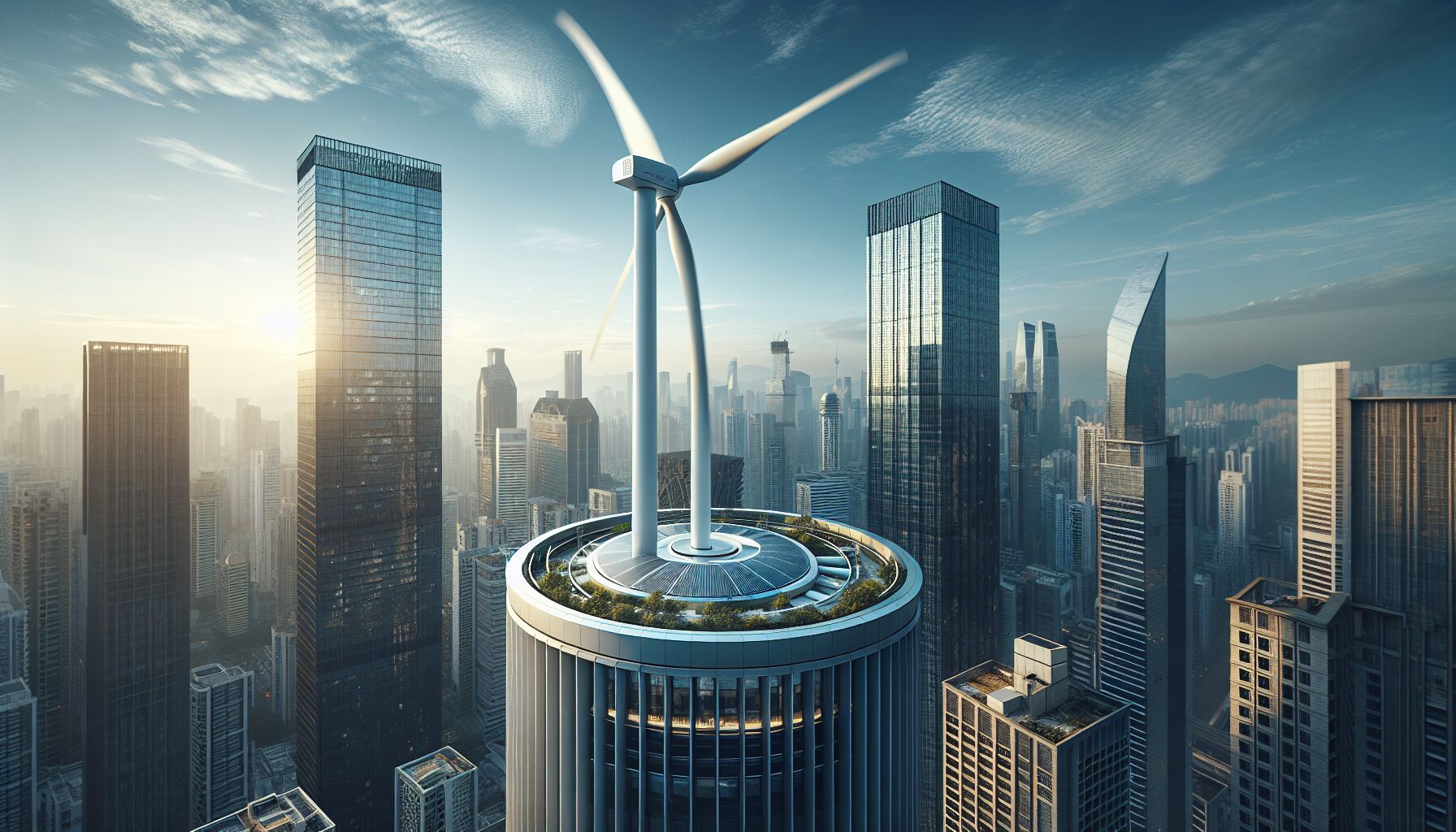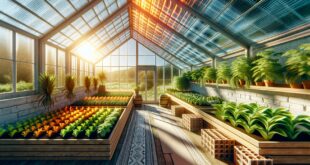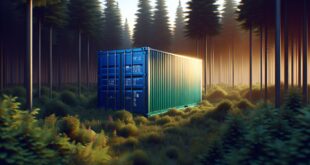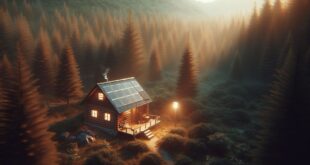 Understanding how wind behaves in urban environments is like deciphering the language of the air itself. Wind, much like a conversation in a busy café, is influenced by what’s around it. Buildings, trees, and other structures create a series of obstacles that the wind must navigate, which leads to a dance of swirls and gusts that can be both predictable and capricious. For anyone eager to harness this invisible force, it’s essential to comprehend these nuances.
Understanding how wind behaves in urban environments is like deciphering the language of the air itself. Wind, much like a conversation in a busy café, is influenced by what’s around it. Buildings, trees, and other structures create a series of obstacles that the wind must navigate, which leads to a dance of swirls and gusts that can be both predictable and capricious. For anyone eager to harness this invisible force, it’s essential to comprehend these nuances.
Urban areas, unlike vast open fields, present challenges for capturing consistent wind power, yet they offer unique opportunities too. Tall buildings can act as a funnel, concentrating wind in ways that can be surprisingly powerful. It’s a bit like how a river flows faster when confined through a narrow gorge. But here’s the thing — every urban landscape will affect wind patterns differently, so a one-size-fits-all approach just won’t do. By analyzing local patterns, paying attention to places where natural winds are amplified, one can tailor solutions effectively.
Now, why should we care about getting to grips with urban wind patterns? Harnessing wind power is more than just a techy endeavor reserved for rural areas. It’s a step toward urban sustainability, a means to utilize renewable energy without heavily altering our surroundings. And let’s face it: the more we grasp how to convert a city’s natural winds into energy, the less we’ll depend on non-renewable sources. This isn’t just about energy; it’s about respect for the forces around us, about living in harmony with them.
As we digitize and smarten up our cities, integrating solutions based on natural environmental dynamics is crucial. It’s like tuning to the rhythm of nature, allowing us to lead more eco-conscious lives. The interconnectedness between our daily actions and the planet’s health becomes clearer when seen through this lens. Imagine, if you will, a future where cities not only sustain themselves but also contribute positively to the wider environment — this is where understanding wind patterns can lead us.
Quoting the brilliant Buckminster Fuller once said, “We are called to be architects of the future, not its victims.” His wisdom nudges us to look beyond immediate obstacles and see the opportunity for creating a sustainable future right from the urban jungle we live in.
For more insights into how to harness urban winds effectively, consider resources provided by the U.S. Department of Energy, which offers detailed mappings of wind patterns that can guide your decisions. And remember, as you venture into this realm of renewable energy, it’s not just about what’s practical, but also about fostering a deep connection and respect for the natural world enveloping us.
Selecting the right turbine
Choosing the right wind turbine is a bit like selecting the best partner for a dance. You want one that matches your rhythm, understands your quirks, and works with you harmoniously. Understanding urban wind patterns is just the beginning; now it’s time to find a turbine that can effectively harness that chaotic yet potent energy swirling through cityscapes.
First things first, consider the type of wind turbine. There’s a stark difference between horizontal-axis wind turbines (HAWTs) and vertical-axis wind turbines (VAWTs). HAWTs are the kind you often see in open fields, with blades rotating on a horizontal axle — they work well in areas with a consistent wind direction. But when it comes to urban settings, VAWTs are often more suitable. These turbines look a bit like an eggbeater and can catch the wind from any direction, making them ideal for cities, where gusts are unpredictable.
Another factor to ponder is the size. Large turbines might generate more power, yet they require substantial space — something not all city-dwellers have to spare. Conversely, smaller turbines might seem less intimidating and easier to manage, but it’s vital to ensure they can generate enough power to make a difference. It’s like cooking a pot of soup: too much seasoning in a small pot, and it overwhelms the flavors; too little in a large pot, and the taste falls flat.
Material and durability should not be overlooked either. Urban environments can be harsh, with pollution and variable weather potentially wearing down materials faster than expected. Opting (there’s that word we’re not supposed to use!) for durable materials — possibly a composite of fiberglass and epoxy resin — can extend the lifespan of your turbine.
Cost, of course, is always a consideration. While it’s tempting to go for the cheaper model, remember that investing wisely in a quality turbine might save you money in the long run. Think of it as a classic parable: buy nice, or buy twice. Energy Management experts advise checking for local incentives or subsidies that might affect your purchase decision. A good starting point is the Database of State Incentives for Renewables & Efficiency (DSIRE), which provides detailed information on initiatives available in each state.
When you’re making decisions, consider not just the technical specifications, but also how this choice aligns with your broader commitment to urban sustainability. Think of your wind turbine as an ambassador for renewable energy in your corner of the city. Gandhi once reminded us, “Be the change that you wish to see in the world.” As small as they might seem, your choices reverberate outward, influencing others to adopt more mindful approaches to energy consumption.
By now, you might be second-guessing whether you’ve chosen the right path. But remember, the essence of urban sustainability lies in making informed decisions, aligning with nature, and seeking improvements continually. Every step forward, even if it’s modest, contributes profoundly to a sustainable future, turning concrete jungles into thriving, eco-conscious communities.
Installation and maintenance tips
 When it comes to setting up your own wind turbine in the city, you’ll want to be prepared like a seasoned sailor — ready to catch the wind at just the right moment. Proper installation is not just about getting that turbine spinning; it’s about weaving it into the urban fabric as naturally as a tree nestles into a forest. Placement is your first big call. Where should your turbine live? Rooftops are prime spots — like the crest of a hill where wind moves freely, unencumbered by the bustle below.
When it comes to setting up your own wind turbine in the city, you’ll want to be prepared like a seasoned sailor — ready to catch the wind at just the right moment. Proper installation is not just about getting that turbine spinning; it’s about weaving it into the urban fabric as naturally as a tree nestles into a forest. Placement is your first big call. Where should your turbine live? Rooftops are prime spots — like the crest of a hill where wind moves freely, unencumbered by the bustle below.
But let me explain, even a rooftop installation isn’t as simple as setting up deck chairs. You’ll need to factor in the structural integrity of your building. Is it strong enough to support the turbine’s weight and withstand the vibrations? That’s where consulting with a structural engineer comes into play, someone who can ensure your building doesn’t sway under pressure like a skyscraper in an earthquake movie. Tall buildings might call for guy wires, which stabilize the structure because, like in relationships, support can keep things grounded. Also, consider potential noise levels and maintenance access — your turbine spinning above should be a boon, not a bane.
Securing permits is the next dance step you shouldn’t sidestep. Many municipalities have specific regulations around wind power installations. This could include height restrictions or noise ordinances. Checking with local authorities might feel like a tedious chore, but it ensures your project doesn’t hit legal turbulence later on. And here’s some real-world advice: join community groups. They’re a hotspot for insider tips and shared experiences, helping you navigate the red tape.
On the subject of maintenance — turbines, like souls, require a bit of tending. Regular check-ups are your best defense against unexpected hiccups. You’ll want to inspect the blades for wear and tear annually. Think of it like keeping tabs on your health: small changes can prevent larger issues down the line. Ensure all bolts and fastenings remain tight, much like a sailor constantly checks the rigging — one loose piece and the wind will have its way.
Lubrication is essential. Your turbine’s moving parts should be as smooth as your morning latte, free from grind and squeal. And don’t forget the electronics; after all, it’s the lifeblood of the turbine, connecting it to your home. Monitoring systems can alert you of issues before they spiral, just as a smoke alarm warns of unseen dangers.
To add a touch of nature’s wisdom, consider Nikola Tesla’s perspective: “The day science begins to study non-physical phenomena, it will make more progress in one decade than in all the previous centuries of its existence.” This rings true in our quest for renewable energy. When maintaining your turbine, it’s not just about nuts and bolts; it’s about maintaining a balance with nature and technology, harmonizing urban sustainability with personal responsibility.
Lastly, the online world is ripe with resources. Websites like the U.S. Department of Energy and the Lawrence Berkeley National Laboratory provide robust guides and support for maintenance best practices. So, as you step forward into harnessing the wind, remember that every breeze you capture propels you — and your community — closer to a sustainable urban future.
 DS Haven In Light Of Things
DS Haven In Light Of Things





